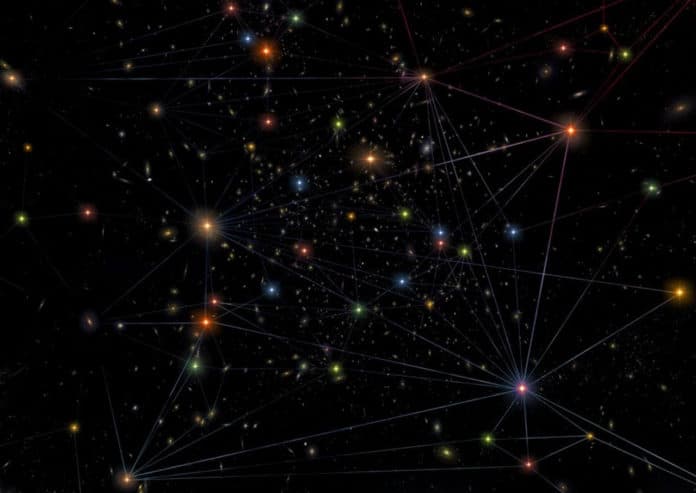Astronomers at the University of Southampton have recently demonstrated a method for weighing supermassive black holes at the centres of galaxies. The technique involves measuring the distances between the galaxies that contain them.
Many studies have suggested that there is a close link between supermassive black growth and galaxy evolution, but this has not yet been proven. The supermassive black holes at the center of the galaxies with masses that can exceed a billion Suns. Such black holes even hold the potential to power quasars, the most luminous sources in the Universe. They may halt the formation of stars by releasing copious amounts of energy, which heats up and fragments the gas in their host galaxies.
This new technique helps scientists measure the mass of some of the very largest black holes in the universe, even when they lie at the centers of very faint, distant galaxies.
Accurately measuring the masses of supermassive black holes is usually achieved by measuring the velocity of the surrounding stars or gas. This is incredibly challenging and requires extremely sensitive telescopes and complex observations. However, galaxies and their supermassive black holes are believed to reside in haloes made of dark matter. Numerical simulations show that more massive dark matter haloes deviate more from a random spatial distribution – more strongly clustered. Therefore, their clustering strength can be used to weigh the halos.
Astronomers expect more massive black holes to be facilitated by progressively enormous halos, so the grouping of the black holes can be utilized to gauge the masses of their hosts. Thusly, we can use this to compel the majority of the black holes themselves. By contrasting reenactments and late information on the spatial distribution of galaxies, the group discovered proof that supermassive black holes are, all things considered, not as huge as recently suspected.
Dr. Francesco Shankar of the University of Southampton said, “These findings have significant implications for our understanding of the evolution and growth of supermassive black holes. What we have discovered suggests a greater ability to release energy, and less strength in powering gravitational waves as supermassive black holes merge.”
